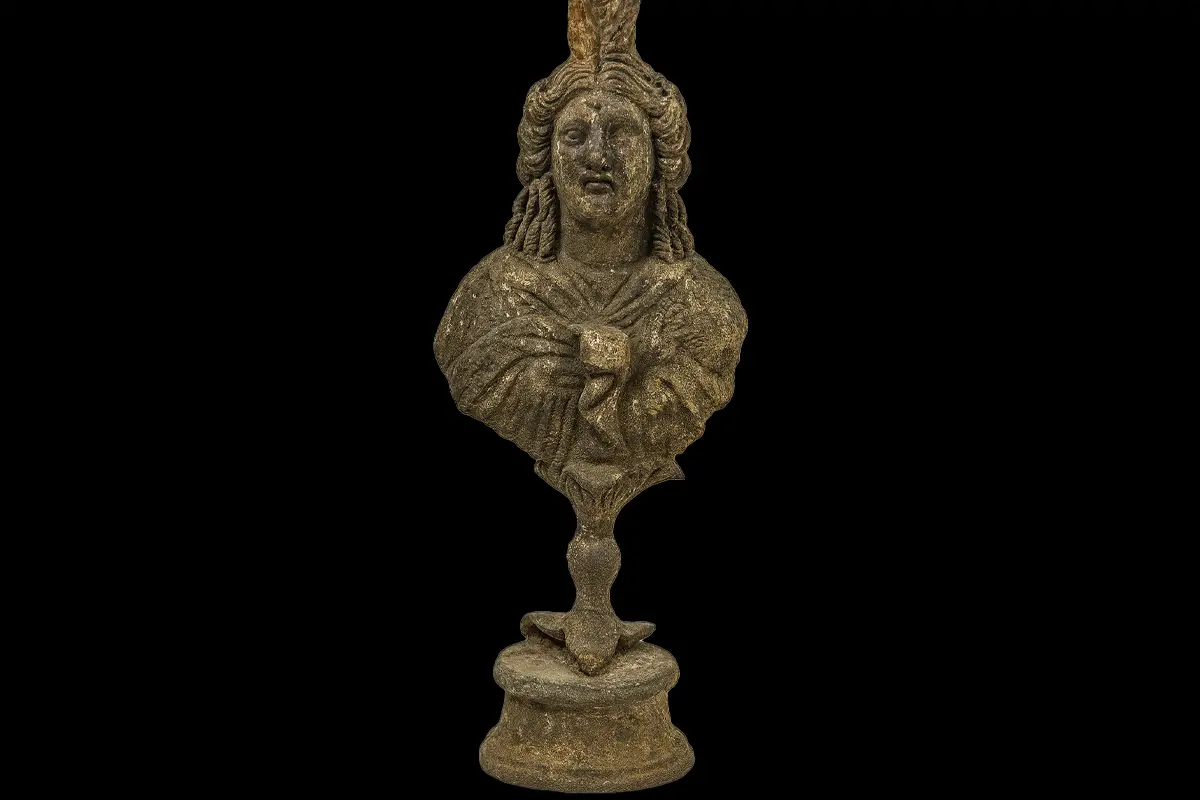Excavations at Satala in Turkey’s Gümüşhane province have led to the discovery of a bronze bust depicting Isis, an Ancient Egyptian goddess whose worship spread throughout the Greco-Roman world.
During the Roman period, Satala (castra stative) was a major military and administrative centre on the empire’s eastern frontier. It served as the headquarters of the Legio XV Apollinaris, consisting of a fortified military camp (castrum) and a civilian settlement.
The discovery was made in the settlement’s necropolis during excavations led by Dr. Elif Yavuz Çakmur of Karadeniz Technical University.
Measuring 20 centimetres tall, the bronze bust portrays Isis atop a circular base with three leafed calyx motifs.
As Hellenistic culture was absorbed by Rome in the first century BC, the cult of Isis became a part of Roman religion. Her cult was especially popular among soldiers and merchants, symbolising hope and protection.
Çakmur explained: “We know the legions here followed the cults of Mithra and the Twelve Gods. The presence of Isis, however, reveals the extent of religious diversity within the Roman army and shows how Eastern deities were embraced across the empire.”
The find marks the first sculptural discovery at Satala since the 1870s, where the famous Satala Aphrodite, a larger than life-size head from an ancient Hellenistic bronze statue, was found in a field just outside the settlement’s perimeter.
The Isis bust is currently undergoing restoration and will be exhibited at the Gümüşhane City Museum once the work is complete.
Header Image Credit : Karadeniz Technical University
Sources : Aydinlik.com





